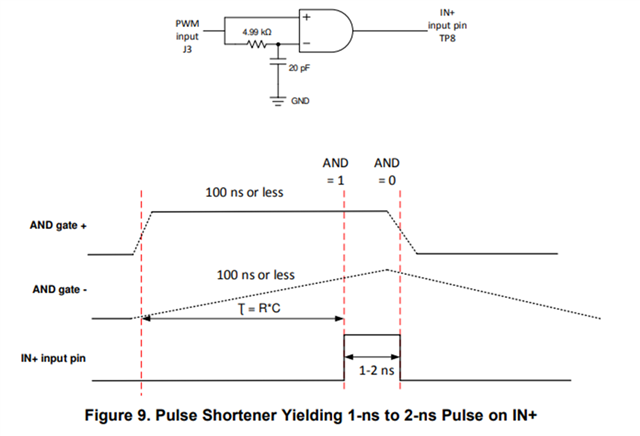Other Parts Discussed in Thread: LMG1025-Q1
Hi,
Good Day. I have a customer who is working LMG1025-Q1EVM. Please see below his query for your reference. Thank you very much.
I am looking for an EVM (evaluation board) that can be used with the LMG1025 as a signal source providing fast rise times approximately 1nsec?
I purchased the LMG1025 evaluation board and it needs an input pulse. It references a 100 nsec pulse but with a fairly fast risetime. My signal generator is not so fast more like 10sec fastest risetime. When used with the setup for the the LMG1025 (or 1020) it can provide an output pulse of approximately 10 nsec. So I am looking for an evaluation board function generator that can provide PWM with rise and fall times of approximately 1 nsec to used for evaluating the LMG1025.
I have the LMG1025-Q1EVM, the test input in the user guide makes use of a 100 nsec pulse but fairly fast risetime.
Just looking for a evaluation board that can serve as a signal generator with approximate Tr of 1nsec and pulse width of 100 nsec is okay
Best Regards,
Ray Vincent


